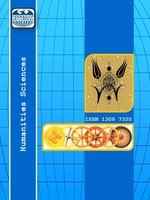“AFET” BİR KENTİN HİKÂYESİ: YOK OLAN KÜLTÜREL BELLEK VE KENTSEL MİRASIN SERENCAMI, DİYAYBAKIR ÖRNEĞİ
Diyarbakır; Irak ile Anadolu, Mezopotamya ile Kafkasya’yı birbirine bağlayan yolların kesişme noktası üzerinde kurulmuş ve de günümüze kadar gelebilen kültürlerin mirasını barındıran tarihikentlerden biridir. Tarihi uygarlıkların yaratmış olduğu kültürel miras örüntüleri ve mekânsal izleri, bu kentin her doku parçasında görmek mümkündür. Kentin somut kültürel kimliğini tanımlayan tekil yapı ölçeğinden makro kentsel doku ölçeğine kadar olan yapılarda yerel malzeme kullanımı; geleneksel dokuyu belirleyen bir ölçüt olarak benimsenerek, kentin tarihsel kimliği bu şekilde ortaya çıkmıştır. Yapılı çevre(ler) üzerinde kentsel bağlamda yaratılan uygarlıkların şekillendirdiği mekânsal dokulara, bölgesel bir düzlemde baktığımızda; kentsel dokuya belirleyen süreçler, tarihsel etkileşimler, kültürel birikimler ve teolojik dışavurumlar ortak bir pota içinde tezahür ederek, kültürel miras dediğimiz olgu ortaya çıkmıştır.
THE STORY OF A "BEAUTIFUL" CITY: THE ANNIHILATED CULTURAL MEMORY AND CONSEQUENCE OF URBAN HERITAGE, THE CASE OF DYYARBAKIR
Diyarbakyr is a historical city founded on the intersection point of the roads connecting Iraq and Anatolia, Mesopotamia and Caucasus and having sheltered the heritage of cultures having been able to reach until today. It is possible to see the cultural heritage patterns created by historical civilizations and their spatial traces thereof in each part of fabric. By adopting the use of local materials [stone, wooden etc.] in structures ranging from singular structure scale to macro urban fabric scale defining the concrete cultural identity of the city as a criterion determining the general fabric, historical identity of the city has emerged in this way. When we look at the spatial fabrics formed by civilizations created in urban context on built environment(s) in a regional platform, the fact what we name as cultural heritage has emerged by appearance, in a common melting pot, of the processes determining the urban fabric, historical interactions, cultural accumulations and theological expressions. Architectural products defined in physical and cultural expressions of cities like Diyarbakyr have determined the formation orders of locations in environmental fabric by reflecting on appearances of buildings the cultural belongings, social values and common acknowledgments determined by life. In spite of such facts, with imposition of the model "top-down cultural discharge" to Diyarbakyr, a communal subversion, involuntary emigration, poverty and indifference of local/central decision makers have been the principal elements determining the development processes of the city today. The components of historical urban fabric have been annihilated in such cyclical spiral; the structures sustaining the social memory and formed by traditional thought have lost their originality and gained different meanings as well. In order to change the city or communal living having existed from past up until today, the opportunity to be able to do something without "inhibiting" the cultural and communal memory creating the reasons for existence of the city or without interfering with the same has not disappeared. Historical city settlements providing the representation of cultural heritage show us how the architectural products created with a gain which has been able to reach from history to our day sustainable are. Cultural and communal memories which are determinant in shaping the structures providing own representations of people are of great importance for fictionalizing the future cities/settlement fabrics within a new context. This article points out the consequence of the cultural heritage defining the essence and spiritual mystery of the historical urban fabric in Diyarbakyr within its own structure in today's modern architectural implementations and the adventure of how the communal and cultural memory having a role in shaping the city has been destroyed.
